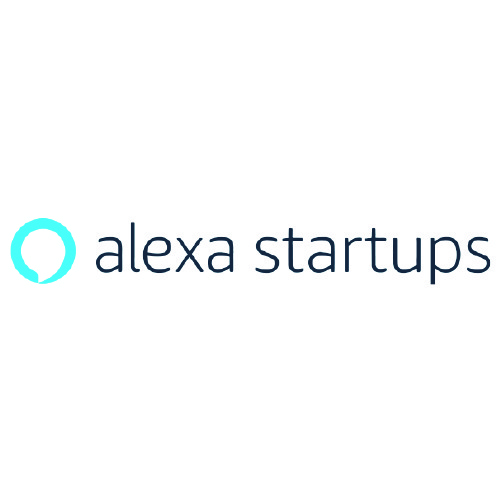Onwards and Upwards: Building and Maintaining Relationships in CVCs
May 15, 2024
Interviewed by Nicolas Sauvage on December 29, 2022
Phoebe Wang, Investment Partner at Amazon Climate Pledge Fund, recently shared with the Corporate Venturing Insider audience insights and best practices that she hopes will influence the way people think and behave in this ecosystem for investors and entrepreneurs alike.
The Art of Negotiating
In a world as dynamic as Corporate Venture Capital, negotiations play a pivotal role in shaping partnerships, investments, and the overall success of ventures. Whether you’re a startup founder seeking funding or a representative of a corporate venture arm, mastering the art of negotiation can lead to mutually beneficial outcomes that extend beyond the boardroom.
“You want to make sure that as you negotiate, you’re building out a positive relationship, which will set the right foundation going forward instead of a one-time transactional negotiation,” explains Phoebe.
Before entering into any negotiation, it’s crucial to have a well-defined strategy. Phoebe urges the audience to consider using a negotiation preparation sheet to outline the key players on both sides: the principals and the agents. Identifying the zone of negotiation possibilities for each party and encompassing their goals and objectives is highly helpful. Having this strategic roadmap as an investor will ensure that no critical points are missed during the negotiation process.
While negotiations might seem like a zero-sum game, they offer an opportunity to expand the pie through value creation. Recognizing the levers that can generate value for both sides and exploring how synergies can be harnessed to elevate the partnership beyond immediate gains is a big part of building that positive relationship, Phoebe outlined.
Furthermore, Phoebe breaks negotiations in the CVC into two distinct levels. The first level encompasses tangible outcomes such as terms, valuations, and board representation. While these are crucial, the second level, focusing on relationships, often holds equal or greater significance. A successful negotiation, as Phoebe put it, isn’t just about the term but about fostering a positive and transparent relationship between the CVC and the startup. Paying attention to how the other party negotiates and communicates, can prove to provide several insights to better conduct the relationship in future times.
Once invested, the relationship between the CVC and the startup becomes bonded for life, similar to a marriage that Phoebe compared. Investments and collaborations usually extend over several years, so negotiations should be viewed as the foundation for a productive and enduring relationship. When asked for tips on how to achieve this, Phoebe described her foundational pillars as trust, transparency, and mutual respect. These three things will help set the stage for successful collaboration and innovation down the road.
Good Governance
A crucial facet of governance is staying informed about regulatory updates. While this might sound straightforward, as Phoebe points out, it’s often overlooked. In the journey from private to public, companies experience shifts in compliance requirements, cybersecurity standards, and auditing obligations. Learning from the experience of seasoned public board members, we discover the importance of understanding auditing needs and cybersecurity protocols. As growth-stage private companies prepare to step into the public arena, delving into public regulations becomes imperative. This mastery over the evolving regulatory landscape ensures smoother transitions and proactive risk mitigation.
But the delicate dance of governance extends beyond adhering to regulations. A fundamental lesson Phoebe points out is the clear distinction between board members’ roles and their affiliations. While individuals may wear different hats, be it a corporate VC representative or a board member, it’s vital to navigate this balance adeptly. The fiduciary duty to the company should always supersede other interests. Introducing a shareholder representative in the boardroom can act as a safeguard, ensuring a dedicated focus on the company’s well-being. This separation not only prevents conflicts of interest but also serves as a platform for mentoring junior team members, preparing them for future board roles.
“You want to have a board that has a good foundation that you can move around, you can pull and push a little bit, but then everyone still works as a team,” says Phoebe. “So that relationship piece is important.”
Governance discussions can be intense, reflecting diverse viewpoints and aspirations. Establishing a strong, respectful rapport among board members is paramount. The ability to harmoniously function as a team while accommodating differing opinions can make or break the efficacy of a board. Beyond technical expertise, fostering positive personal relationships enables healthy debates and constructive dissent. By understanding colleagues’ motivations and viewpoints, board members can ensure discussions remain fruitful, further cementing the foundation of effective governance.
Building Effective Teamwork
Navigating the realm of governance within CVC demands more than adhering to rules; it requires fostering a collaborative spirit among board members. In the interview, Phoebe took the audience through three strategies that shed light on how to build this crucial spirit for optimal board performance.
Relationship Building- For new board members, taking the time to know both the fellow board members and the management team is invaluable. To foster this relationship, Phoebe advises initiating one-on-one conversations with each member to get a glimpse of their personalities, motivations, and expectations. Gathering insights on the top challenges and opportunities they perceive helps create a context-rich understanding.
Identify and Leverage Individual Strengths- To bolster board teamwork, board members should aim to strategically position themselves based on their expertise. Understanding one’s skills and where they complement the team’s capabilities can contribute to a well-rounded board. This may involve stepping into roles that balance the team dynamic, whether providing technical insights or offering commercial perspectives.
Prepare for Conflict- Conflict is an inherent aspect of any board’s journey, but it’s how conflicts are managed that defines the board’s strength. Effective boards anticipate potential conflicts and address them proactively through pre-board discussions. Engaging in precursor conversation during informal settings, such as board dinners or per-meeting interaction, can help socialize different viewpoints and ensure that conflicts are resolved constructively.
Onwards and Upwards
The Amazon Climate Pledge Fund, where Phoebe’s focus currently lies, was launched by Amazon in 2020 and aims to support companies and technologies that contribute to the reduction of carbon emissions and the advancement of sustainable practices. The fund invests in a wide range of sectors, including transportation, energy, circular economy, and more, to accelerate the transition to a low-carbon economy and address the challenges of climate change.
“There are a lot of very interesting things that we can help our startups, for example, make the introduction to our team within Amazon, and then also having our Amazonians to help out if we think about what is the secret sauce for Amazon, the fundamental principles and fundamental skill sets that we all learn is the scaling up innovation,” says Phoebe. “Every Amazonian will be able to help out in some areas.”
When asked about where the excitement lies next, Phoebe’s answer was clear: plastics and building environment. She encourages entrepreneurs in the space to reach out to her, as she is a strong proponent of engaging and creating meaningful relationships.

 Building a positive relationship foundation, strategizing negotiations, and recognizing value- creation opportunities are pivotal aspects for both startups seeking funding and corporate venture arms.
Building a positive relationship foundation, strategizing negotiations, and recognizing value- creation opportunities are pivotal aspects for both startups seeking funding and corporate venture arms. 



















